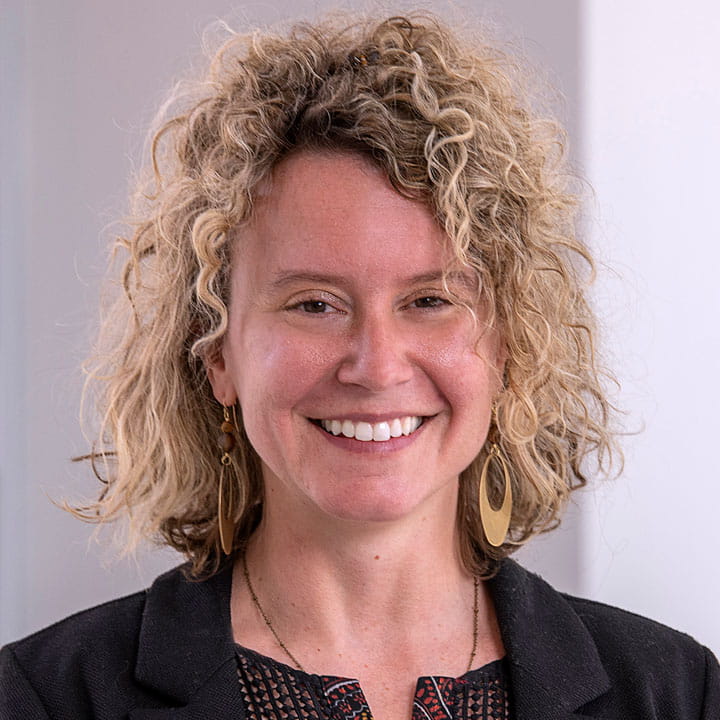
Cancer screenings and early detection save lives. The data is indisputable that, if detected early, cancers can be more successfully treated. But what if you live in an area of the country where fair access to health care is complicated by the aftereffects of a decades-old discriminatory practice?
A new study from The Ohio State University Comprehensive Cancer Center – Arthur G. James Cancer Hospital and Richard J. Solove Research Institute (OSUCCC – James) says the practice, known as redlining, correlates to lower cancer screening rates today.
What is redlining, and how is it discriminatory?
Redlining is a practice in which financial institutions refuse to provide loans or insurance to people who live in an area deemed to be a poor financial risk. The practice, which was banned more than 50 years ago, predominantly impacted Black homebuyers, contributing to segregation and inequality.
When the United States Congress enacted the Fair Housing Act of 1968, it marked the end of redlining — but not the end of its unjust legacy. Still today, people who live in areas that were once redlined continue to be negatively affected.
Redlining and cancer screening rates
According to the OSUCCC – James study published in the Journal of the American College of Surgeons, people who live in historically redlined areas are 24% to 79% less likely to be screened for breast, colorectal and cervical cancer than people who live in areas not associated with redlining practices.
“Our study shows that the legacy of redlining has a long historical arc that still persists today due to chronic under investment in these areas,” said Timothy Pawlik, MD, PhD, a surgical oncologist at the OSUCCC – James and lead author of the study. Dr. Pawlik also serves as surgeon-in-chief of The Ohio State University Wexner Medical Center.
“Redlining serves as a surrogate for systemic racism, especially as it pertains to those who live in areas that lack adequate investment in education, employment, transportation and health care,” Dr. Pawlik says.
Using national 2020 census tract level data on cancer screening rates and historical redlining grades, the researchers found that:
- Among 11,831 census tracts, 3,712 tracts were redlined, with the greatest number of redlined tracts in New York and California, particularly in the New York City and Los Angeles metropolitan areas.
- Redlining was associated with lower odds of hitting screening targets in all three types of cancer: 24% lower odds in breast cancer, 64% lower odds in colorectal, and 79% lower odds in cervical cancer, compared with non-redlined areas. This association persisted even after adjusting for contemporary social vulnerability and access to care.
- A large proportion of the total effect of redlining on cancer screening could be attributed to poverty, lack of education and limited English proficiency.
How to reduce the impact of redlining on cancer screening rates
“By demonstrating the long-term implications of discriminatory practices, the study results can help shape health care and social policy reform to reduce health inequities,” Dr. Pawlik says. “Those efforts start with specific, actionable initiatives.”
He notes that improving cancer screening rates in specific areas may require resident questionnaires to determine the potential barriers. For example, if transportation was a barrier, travel vouchers could be provided; if English proficiency was a barrier, an interpreter could be provided.
The team notes steps that could help improve cancer screening rates in historically redlined areas, including:
- government policies that target the areas with social services aimed at poverty alleviation, affordable housing and education
- initiatives to improve access to preventive cancer care, one example being the Mobile Mammography Van by the Navajo Breast and Cervical Cancer Prevention Program
- alternative methods to make it easier for affected people to get screened — for example, since colonoscopies pose significant barriers (bowel prep means devoting most of the day for the exam) tests to detect DNA mutations and blood in the stool may be a more workable approach
“I think the fact that cancer screening is so disparate in these communities is a real wake-up call to all of us,” Dr. Pawlik says.
Study coauthors are Zorays Moazzam, MD; Selamawit Woldesenbet, PhD; Yutaka Endo, MD, PhD; Laura Alaimo, MD; Henrique A Lima, MD; Jordan Cloyd, MD, Mary Dillhoff, MD, Aslam Ejaz, MD.

Accurate, early cancer diagnosis matters
The James Cancer Diagnostic Center gives patients direct, expedited access to diagnostic testing and consultation with Ohio State cancer experts.
Schedule an appointment today




